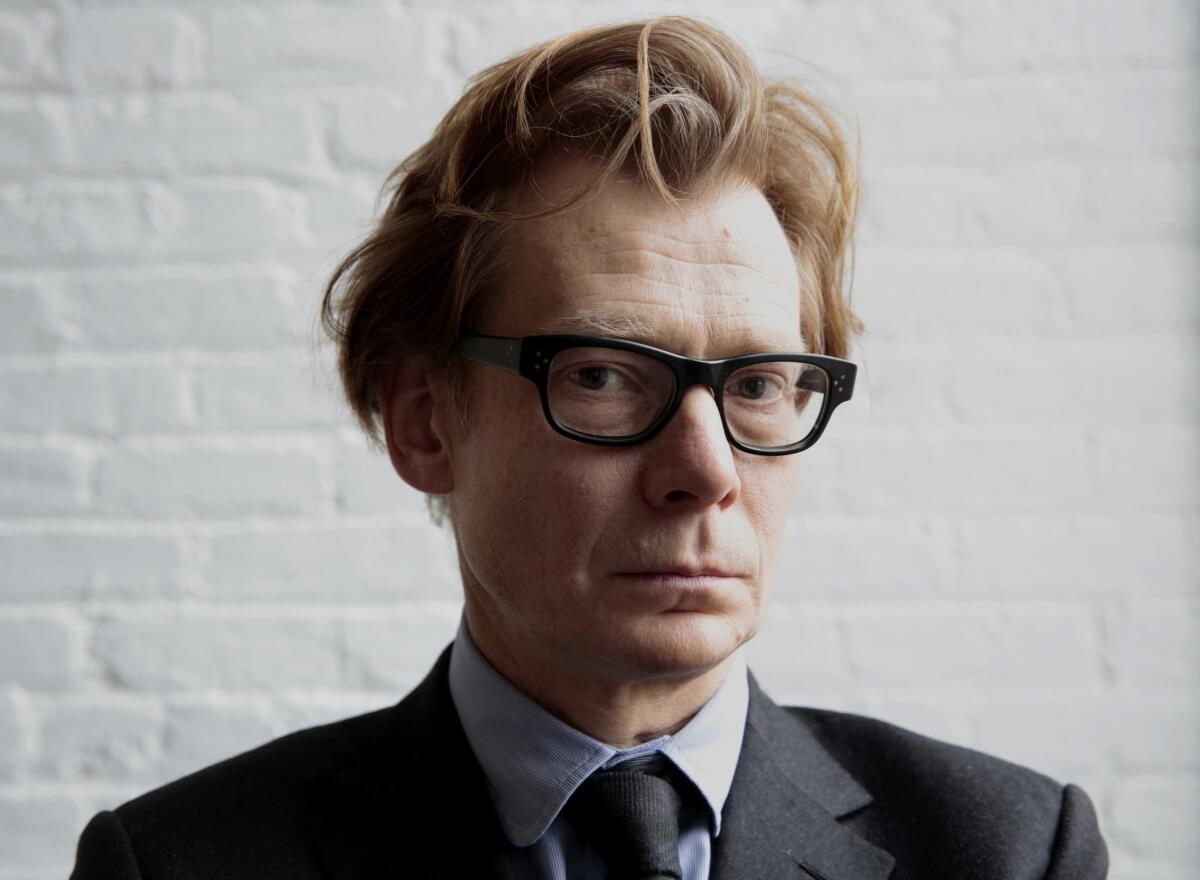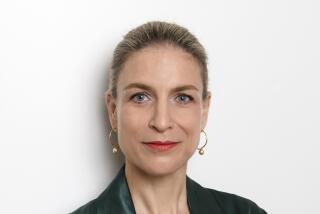New MOCA director Philippe Vergne is a museum veteran

In naming Philippe Vergne, a seasoned career museum professional, as its new director, L.A.’s Museum of Contemporary Art has opted for fundamentals instead of glitz.
Vergne, 47, arrives with credentials that include more than 20 years running museums or curating under museum auspices. Since 2008, he’s been director of the Dia Art Foundation, overseeing a museum on the banks of the Hudson River in Beacon, N.Y., with occasional exhibitions in New York City. The Dia’s collection also includes some of the world’s most prominent examples of land art — Walter De Maria’s “The Lightning Field” in the New Mexico high desert and Robert Smithson’s “Spiral Jetty,” jutting from the shore of Utah’s Great Salt Lake.
Before Dia, Vergne was chief curator at the Walker Art Center in Minneapolis, where he worked 11 years. Before coming to the United States, he directed the Museum of Contemporary Art in Marseille, France.
He becomes the second European to lead MOCA — the other was its founding director, Pontus Hulten, a Swede who’d been founding director of the Pompidou Center in Paris before moving to Los Angeles to begin work at the museum, which opened in 1983. Under Hulten, it began building one of the world’s foremost collections of post-World War II art.
Vergne said this week that his guiding vision is to highlight artists who are breaking fresh ground but frame their work in the broader context of contemporary art history.
“I think MOCA’s collection is one of the best to contextualize that kind of experimentation … to bring to the public the most important and groundbreaking artists who are working today, and using the collection to give them context,” he said.
PHOTOS: Arts and culture by The Times
A MOCA spokesman said the museum was still working out the details of when Vergne would assume the director’s job.
Vergne can claim some notable critics’ raves: Last year under Dia auspices, artist Thomas Hirschhorn turned a South Bronx housing project into a combination art installation, community center and communal artmaking project, with the artist as its daily on-site guide. Called “Gramsci Monument,” it was conceived as a monument to the life and ideas of Antonio Gramsci, an Italian Marxist who died in 1937, imprisoned by the Mussolini regime.
In 2010, Vergne co-curated a retrospective on French artist Yves Klein, who died in 1962, at the Smithsonian Institution’s Hirshhorn Museum in Washington, D.C. Washington Post critic Blake Gopnik praised it as “as fine a show as anyone has seen anywhere, ever.”
Vergne follows former MOCA director Jeffrey Deitch, who was previously a prominent New York City art dealer and mounter of freelance exhibitions that highlighted intersections between visual art and pop culture. He arrived at MOCA with virtually no relevant experience in museum management: fundraising, managing a staff and, perhaps most important, shepherding the wealthy and independent-minded people who make up museum boards and the art-world donor pool. His turbulent tenure ended in September with two years left on a five-year contract.
Paul Schimmel’s forced 2012 resignation as MOCA’s longtime senior curator raised some of the most damaging questions about Deitch’s stewardship.
GRAPHIC: MOCA’s ups and downs with Jeffrey Deitch
Fissures on the museum board became public, four prominent L.A. artists resigned as trustees, and within months the curatorial staff had dwindled from five when Deitch arrived to just two. MOCA’s budget had dropped to $14.3 million a year — almost 30% less spending power than it had in the late 1990s.
Schimmel said Thursday that he’s known Vergne since the 1990s, when the Frenchman asked him to vouch for his green card so Vergne could become a curator for the Walker Art Center.
Vergne, he said, has the qualities that helped establish MOCA’s reputation as one of the world’s best-programmed showcases for contemporary art: “He has a profound commitment to artists, not just showing them, but making them part of the very armature of an institution.”
Deitch’s difficulties included a series of staff defections, and the perception arose — confirmed eventually by Deitch himself — that he’d failed to connect with his own museum professionals.
“Philippe is an institutional man,” Schimmel said. “He’s known to be collegial, and I don’t think he knows anything else besides building a great team he will be a member of and provide leadership for. He’s not a one-man show.”
Schimmel, who’s now a partner and vice president in Hauser & Wirth, an international art dealership that plans to open a Los Angeles gallery to go with others in New York City and Europe, also thinks MOCA’s board turned a corner over the past 10 months or so: It went from entertaining proposals to outsourcing responsibility for the museum’s functions –— including a proposed takeover by the Los Angeles County Museum of Art — to resolving last March to keep MOCA independent by quintupling its endowment to $100 million. MOCA announced last week that it had reached that goal and was now pushing for the $150-million mark.
With that success, followed by Vergne’s hiring, Schimmel said, “I think MOCA is going to be a more attractive institution to donate to and support than it has been in a long time.”
The Dia Art Foundation’s public tax returns don’t quite reflect the fundraising magic that Michael Govan has become known for since 2006, when he left the Dia directorship to become director of LACMA. But the numbers show that Vergne, who took charge in 2008 as the global economy was tanking, managed to avoid the deep cuts MOCA has sustained.
GRAPHIC: MOCA’s ups and downs with Jeffrey Deitch
On his watch, spending hit a low of $8.4 million in 2009-10 — when Dia had a $1.7-million deficit, not counting a non-cash depreciation expense accounting for wear and tear on its buildings and equipment — but rebounded, averaging $10.8 million in the two subsequent years, with 2011-12 results the most recent figures available. Vergne earned $441,950 in 2011 salary and benefits at Dia.
Conditions have been tight enough to force a postponement of Dia’s major retrospective on New York City artist Carl Andre from 2013 to this May.
In a 2012 interview with the New York Times, Vergne said that his tenure had been “the quiet years …a time to put the pieces back together” after the recession and the challen-
ges that came with absorbing increased operating costs from Dia Beacon, opened under Govan in 2003.
A major fundraising push under Vergne enabled Dia to buy a building in Manhattan’s Chelsea district for $11.5 million in 2011, but it has yet to open as a museum space.
Nathalie de Gunzburg, the Dia Art Foundation’s board chair, credited Vergne with expanding its philanthropic base. “What strikes me about him is his integrity towards the artists and the institution. I think [MOCA] is a fantastic opportunity for him and I’m glad he took it. Of course he’s leaving the Dia in an in-between situation, in limbo — we’re in the middle of a capital campaign — but that’s life. We wish him great success.”
Among those willing to lend the new MOCA director a hand is Catherine Opie, one of the artists who resigned from the museum board in July 2012 as internal turmoil spilled over. (Opie was a member of the search committee for the new director.)
“He gets to rebuild the museum — and I’d imagine part of that is his figuring out how he’d like to rebuild the board,” she said. “If he wanted me, I’d be more than happy to serve the museum in any capacity. I believe in the future of MOCA.”
More to Read
The biggest entertainment stories
Get our big stories about Hollywood, film, television, music, arts, culture and more right in your inbox as soon as they publish.
You may occasionally receive promotional content from the Los Angeles Times.












